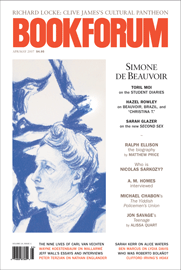
In the small Pennsylvania town where I grew up, the windows of the Gap, the national purveyor of affordable and non-threatening attire, are papered over and a to lease sign has been posted. But across from this empty storefront, Hot Topic is booming. Discordant music pours from an arched entrance meant to resemble a dungeon, and the red-and-purple-striped tights and silver-studded jewelry here sell for double the price of khakis and blue button-downs. That goth attire flourishes while more mainstream options languish is a cultural phenomenon on which academics have finally set their sights—with sometimes illuminating and sometimes predictable results.
Goth:Undead Subculture, Lauren M. E. Goodlad and Michael Bibby’s collection of scholarly essays (the first such book devoted solely to the scrutiny of all things goth, the editors claim), succeeds when its contributors take clearly delineated topics and time frames (Tim Burton’s nostalgia for 1950s and ’60s monster movies, or Buffalo’s nightclub scene from 1982 to 1984) as their objects of inquiry. The pièce de résistance in this mode is Bibby’s stunningly precise reading of Joy Division’s history. The band, which most critics consider foundational for the goth movement, disliked being associated with the term (which Bibby reveals was first coined by music critics who, struggling to describe the new sound, compared it to “the looming, imposing spaces of the gothic cathedral”). He argues that the group’s “permanent-press slacks, short, utilitarian haircuts, skinny ties, and work shirts made them seem more like working-class stiffs than the otherworldly neo-romantic wraiths” later generations would associate them with and explains how Joy Division’s use of techniques like digital delay and guitar distortion and emphasis on drums and bass created, in contrast to the tightness of punk instrumentals and vocals, an atmospheric “spatiality.” The band’s spare, neoclassical record sleeves, designed by a college student who was enamored of Constructivism and 1930s typography, emphasized an austerity and inscrutable melancholy that became emblematic of goth style and outlook.
Although historians locate the emergence of goth music in the British punk, glam, and new-wave scenes of the late ’70s, goth as a characterization is now applied to elements as diverse as Buffy the Vampire Slayer, Fight Club, the fictional character Emily the Strange, Gregory Crewdson photographs, and Alexander McQueen runway shows. Catherine Spooner (who also contributes an essay to this volume) attempts in her own study, Contemporary Gothic, to examine the subculture in all its multiplicity. Her reliance on critical theory, however, tends to bear out the ideas she brings to the discussion rather than allow new insights to emerge from the wide variety of cultural artifacts that she takes as primary texts. That said, it is somehow affirming to know that someone is keeping tabs on the goth population in places like Australia, where parasols are reportedly employed to keep complexions pale.
Spooner references a study conducted at Sussex University last year, noting that former goths tend to succeed intellectually and often end up in what she calls “high-flying professions.” Joshua Gunn’s and Rebecca Schraffenberger’s essays in Goth echo the sentiment, with Gunn remarking that the “social alienation caused by one’s intellectual, artistic, or sexual traits in a mainstream context” draws many to the scene; Schraffenberger writes that goths “are the ‘different’ kids, the artistic ones, the sensitive ones, the ones who didn’t care about joining a sports team or cheerleading.” If the question motivating both of these books is what accounts for goth’s longevity as a subculture, perhaps the answer is as simple as this: As long as there are outsiders, there will likely be goths.
